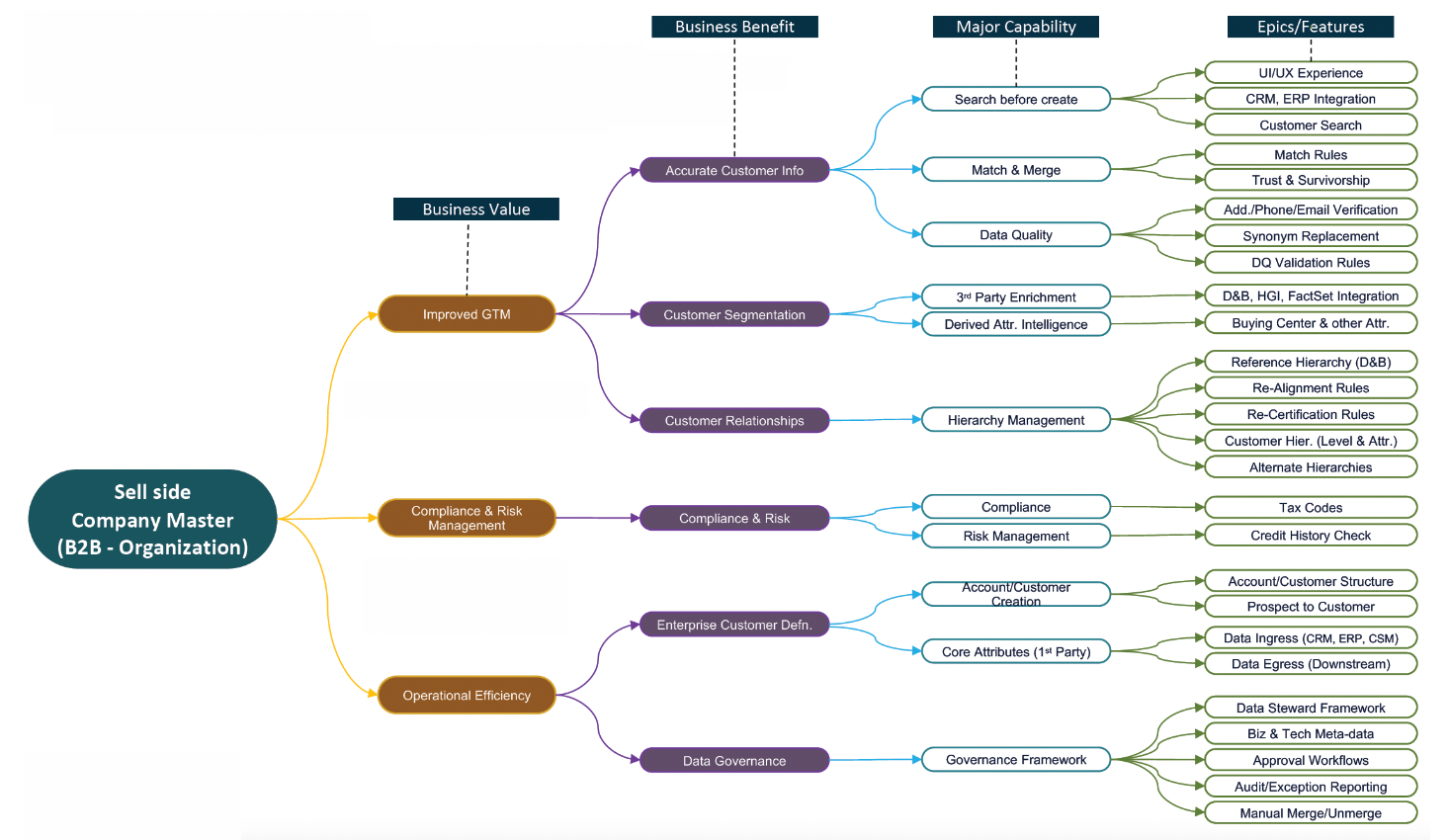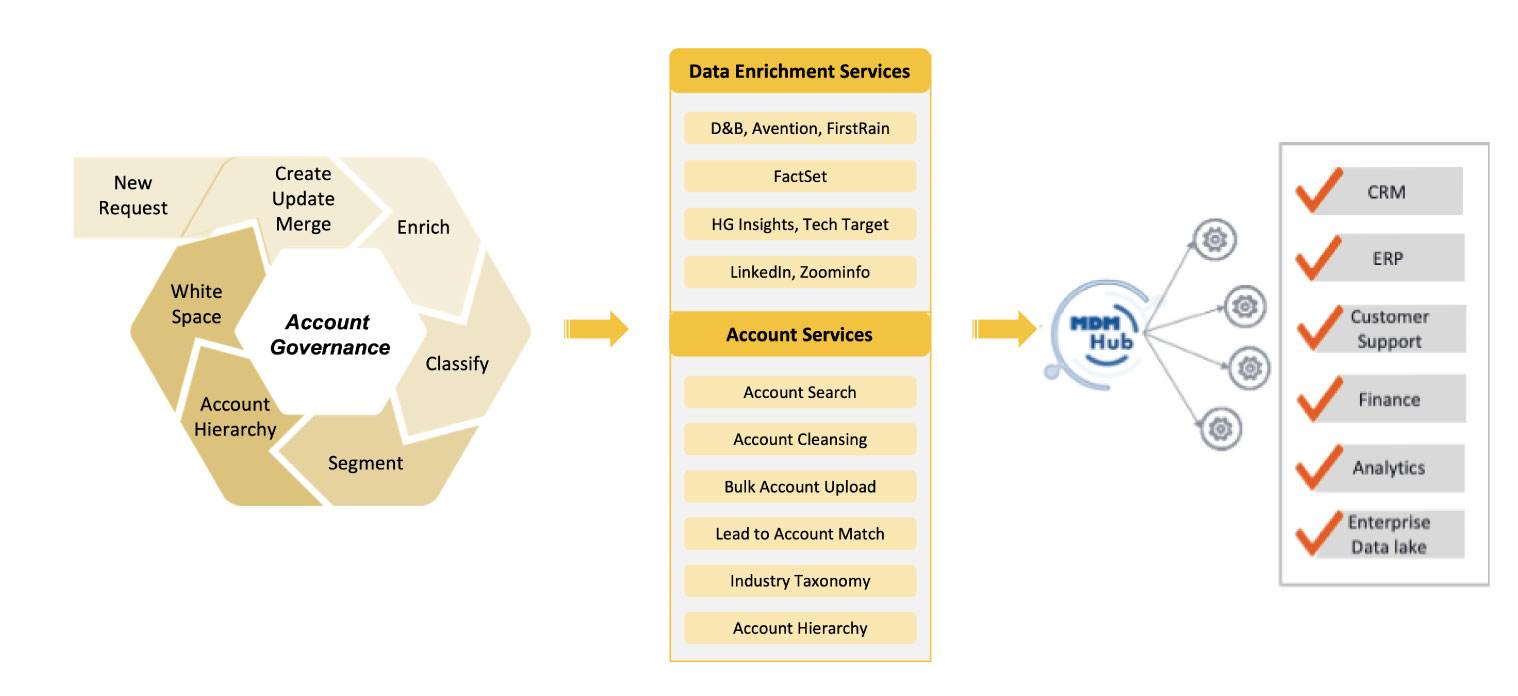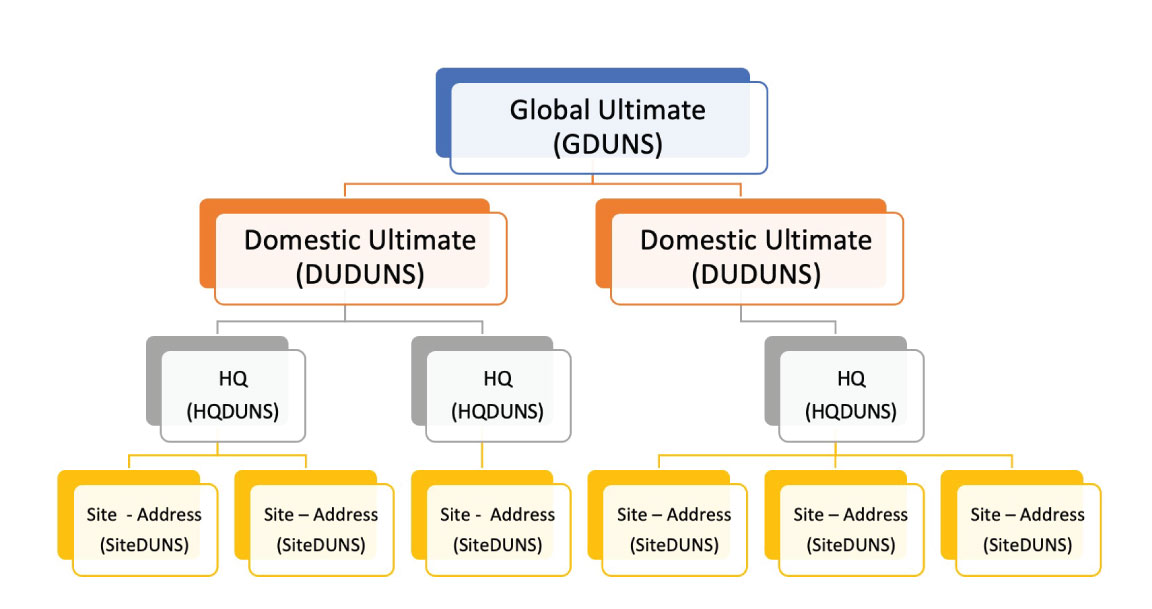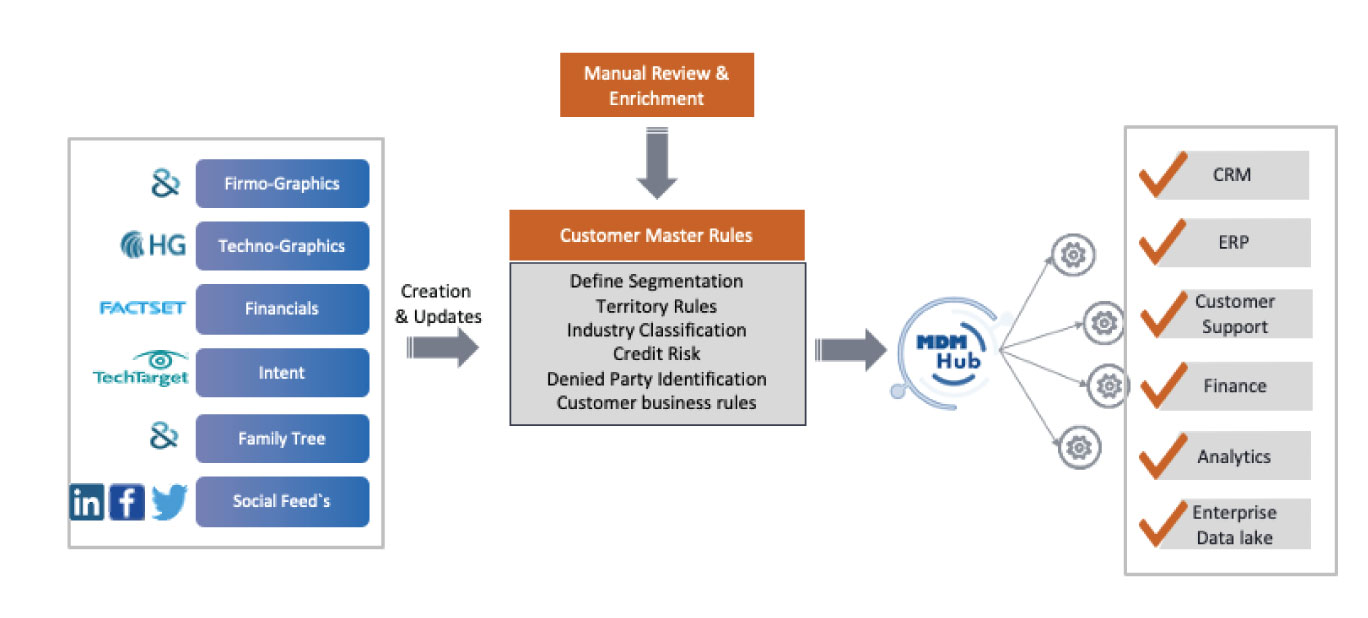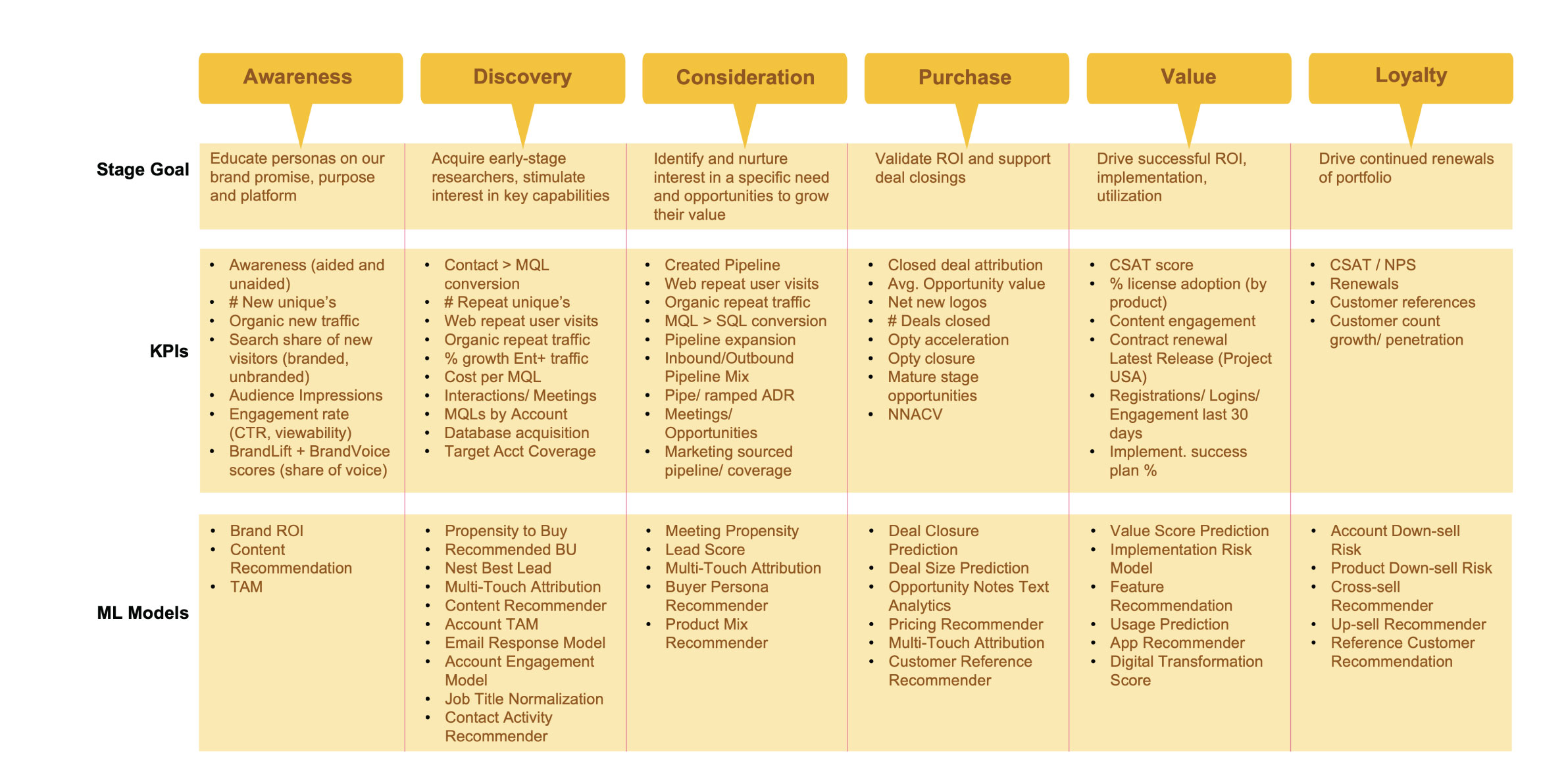Lower Total Cost of Ownership (TCO) and Faster time-to-market:
With a Customer Master in place, adoption and implementation, along with existing maintenance and management costs, come down significantly. MDM’s ability to centralize, standardize, enrich, validate, and link master data records, along with automated workflows to deliver data consistently and quickly across any downstream applications and business use cases, reduces IT costs and accelerates revenue-driving business activities (GTM).
Improve Enterprise-wide Efficiency and Higher ROI
MDM helps enterprises to function with amplified acceleration and agility. It boosts the association between applications, systems, and people by integrating disconnected processes to drive performance, manage workflows better, promote collaboration, and reduce risks. It converts duplicate, inconsistent, contradictory data into a single, authoritative form of truth—a golden repository of data. Efficient master data management has a direct bearing on a company’s ROI, as all the data-oriented activities depend on the quality of your data and strong collaboration. Organizations can support customers and employees with streamlined processes, saving time and resources; marketing and sales teams can target and serve customers in the best possible way, maximizing ROI.
Enhance Decision-making and Great Customer Experience (CX)
MDM enables improved reporting, compliance, and monitoring to drive optimal assessment of risk and opportunities. With a 360-degree view of the customer across all interactions with the enterprise, decision-makers and process owners can swiftly detect and remedy glitches in processes thereby optimizing productivity, market performance, and customer service. MDM helps an enterprise offer a personalized, connected, consistent, and optimized customer experience and engagement. Enhanced visibility into customer preferences through profiling, behavioral data analysis and Predictive analytics drive customer retention, growth and loyalty.


